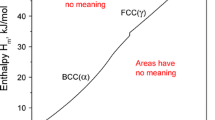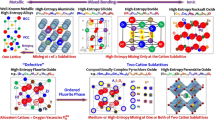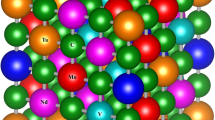Abstract
Computer modelling and theoretical analysis are used to explain the nearly zero and slightly negative coefficients of thermal expansion in β-quartz well above the α-β phase transition temperature. Quartz was selected for study as an archetypal material with a framework structure of stiff units, namely SiO4 tetrahedra, linked through shared oxygen atoms as very flexible hinges. The contributions of the soft mode, the Vallade mode, the TAz phonon branch and the phonon spectrum as a whole are discussed in detail. The results fully support and illustrate a recent theory of the negative contribution to thermal expansion in framework structures. It is a geometrical effect due to the rotation of the tetrahedral units, folding together as they vibrate. The very rapid increase in the lattice parameters for about 20 K above the transition temperature is well accounted for within quasiharmonic theory, and is therefore not evidence for critical fluctuations or fluctuating patches of α +, α − structure.
Similar content being viewed by others
Author information
Authors and Affiliations
Additional information
Received August 14 1997 / Revised, accepted January 26 1998
Rights and permissions
About this article
Cite this article
Welche, P., Heine, V. & Dove, M. Negative thermal expansion in beta-quartz. Phys Chem Min 26, 63–77 (1998). https://doi.org/10.1007/s002690050161
Issue Date:
DOI: https://doi.org/10.1007/s002690050161




